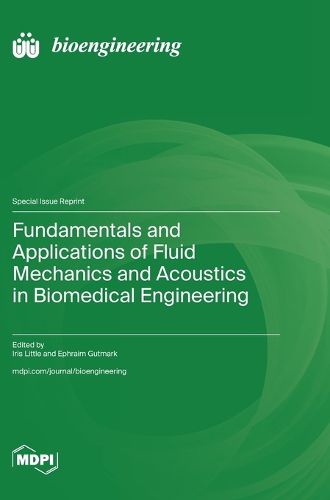Readings Newsletter
Become a Readings Member to make your shopping experience even easier.
Sign in or sign up for free!
You’re not far away from qualifying for FREE standard shipping within Australia
You’ve qualified for FREE standard shipping within Australia
The cart is loading…






This title is printed to order. This book may have been self-published. If so, we cannot guarantee the quality of the content. In the main most books will have gone through the editing process however some may not. We therefore suggest that you be aware of this before ordering this book. If in doubt check either the author or publisher’s details as we are unable to accept any returns unless they are faulty. Please contact us if you have any questions.
The field of biomedical engineering has experienced important advances in experimental, computational, and analytical research in fluid mechanics and acoustics. New imaging modalities, advanced instrumentation, and efficient computational methodologies have enabled these advances. Computational tools are leveraging progress in modern engineering techniques and mathematical tools. The findings contribute to a better understanding of physiological processes in the circulatory and respiratory systems, as well as phonation, and have already led to new therapies. These transformative achievements include the early diagnosis of diseases, the monitoring of their progression, individualized interventions, surgical planning, effective drug delivery, and new medical devices.
Synergy between computational tools and experimental diagnostics is important for the development of both approaches. Accurate experimental data are crucial for the validation of computational fluid dynamics (CFD) to obtain reliable results. CFD can help in designing the experimental setup and to provide a deeper understanding of experimental results, adding information that cannot be measured.
$9.00 standard shipping within Australia
FREE standard shipping within Australia for orders over $100.00
Express & International shipping calculated at checkout
Stock availability can be subject to change without notice. We recommend calling the shop or contacting our online team to check availability of low stock items. Please see our Shopping Online page for more details.
This title is printed to order. This book may have been self-published. If so, we cannot guarantee the quality of the content. In the main most books will have gone through the editing process however some may not. We therefore suggest that you be aware of this before ordering this book. If in doubt check either the author or publisher’s details as we are unable to accept any returns unless they are faulty. Please contact us if you have any questions.
The field of biomedical engineering has experienced important advances in experimental, computational, and analytical research in fluid mechanics and acoustics. New imaging modalities, advanced instrumentation, and efficient computational methodologies have enabled these advances. Computational tools are leveraging progress in modern engineering techniques and mathematical tools. The findings contribute to a better understanding of physiological processes in the circulatory and respiratory systems, as well as phonation, and have already led to new therapies. These transformative achievements include the early diagnosis of diseases, the monitoring of their progression, individualized interventions, surgical planning, effective drug delivery, and new medical devices.
Synergy between computational tools and experimental diagnostics is important for the development of both approaches. Accurate experimental data are crucial for the validation of computational fluid dynamics (CFD) to obtain reliable results. CFD can help in designing the experimental setup and to provide a deeper understanding of experimental results, adding information that cannot be measured.